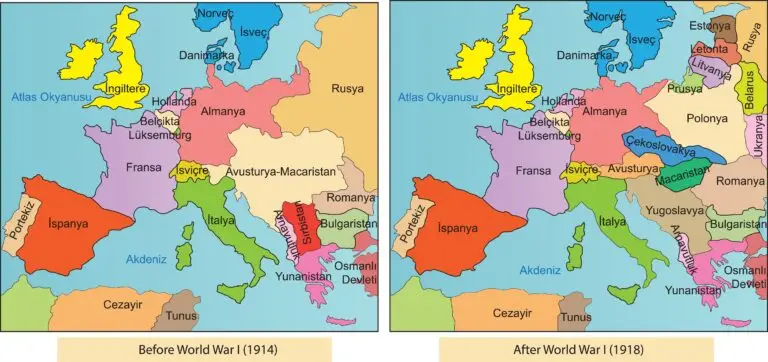Treaty of Versailles

Table of Contents
Treaty of Versailles Overview
The Treaty of Versailles was one of the peace treaties that ended World War I. It was signed on June 28, 1919, at the Palace of Versailles in France, specifically in the Hall of Mirrors.
The treaty was negotiated and finalized during the Paris Peace Conference of 1919, and it imposed significant terms and conditions on Germany.
Treaty of Versailles History
The Treaty of Versailles was one of the peace treaties officially ending World War I, signed on June 28, 1919, at the Palace of Versailles in France.
The treaty was negotiated and signed by the Allied Powers, including the United States, the United Kingdom, France, and Italy, as well as the Central Powers, primarily Germany.
The primary goal of the treaty was to establish the terms for peace and address the issues arising from the devastating impact of World War I.
The negotiations were led by the “Big Four” leaders: President Woodrow Wilson of the United States, Prime Minister David Lloyd George of the United Kingdom, Prime Minister Georges Clemenceau of France, and Prime Minister Vittorio Orlando of Italy.
The treaty included provisions that placed significant blame on Germany for the war and imposed heavy penalties, including territorial losses, disarmament, and reparations.
The War Guilt Clause, Article 231, held Germany and its allies responsible for all losses and damages suffered by the Allies during the war.
The territorial changes outlined in the treaty included the loss of German territory to Belgium, France, and Poland, as well as the establishment of the demilitarized Rhineland.
The military restrictions on Germany included limits on the size and capabilities of its armed forces, restrictions on the development of certain weapons, and the prohibition of an air force.
The treaty established the League of Nations, an international organization aimed at preventing future conflicts through diplomatic means and collective security.
President Woodrow Wilson played a key role in promoting his vision for a “peace without victory” and establishing the League of Nations. Still, he faced challenges in gaining support from the U.S. Congress.
Related Links
Bourbon Dynasty
Marshall Plan
Peace of Westphalia
Spanish-American War